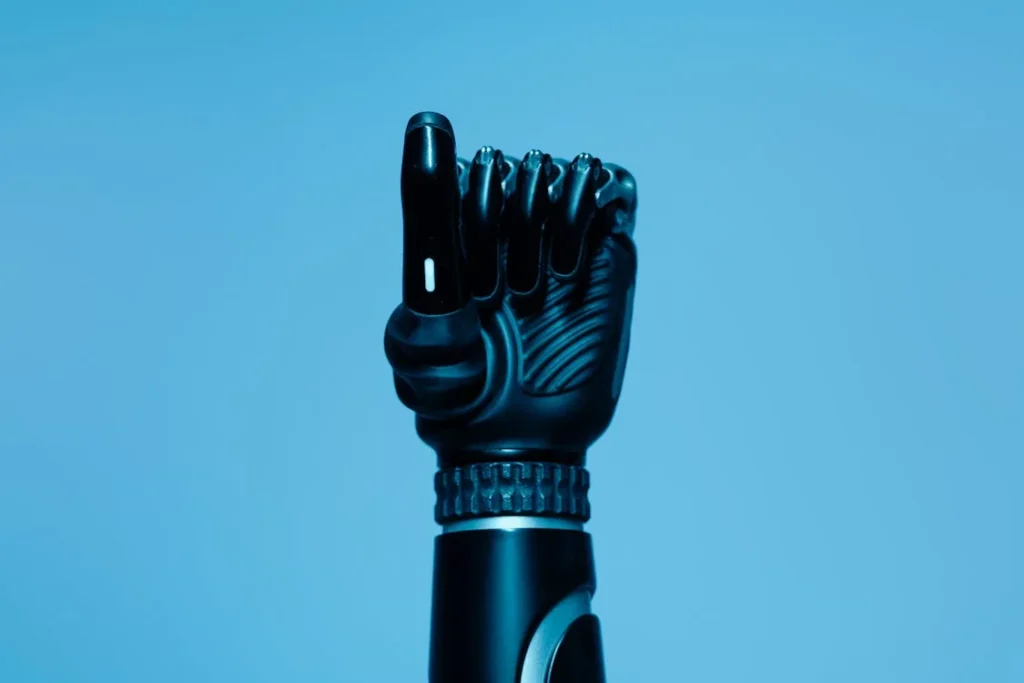Athletes with prosthetic limbs are pushing the boundaries of performance like never before, thanks to groundbreaking advancements in sports prosthetics. Whether it’s sprinting at world-record speeds, executing powerful jumps, or competing in high-intensity endurance sports, the right prosthetic technology makes all the difference.
Leading prosthetic manufacturers are constantly innovating to develop lighter, stronger, and more responsive designs that mimic natural movement while maximizing energy efficiency. These brands are not just creating artificial limbs—they are engineering high-performance athletic tools that allow amputee athletes to compete at elite levels.
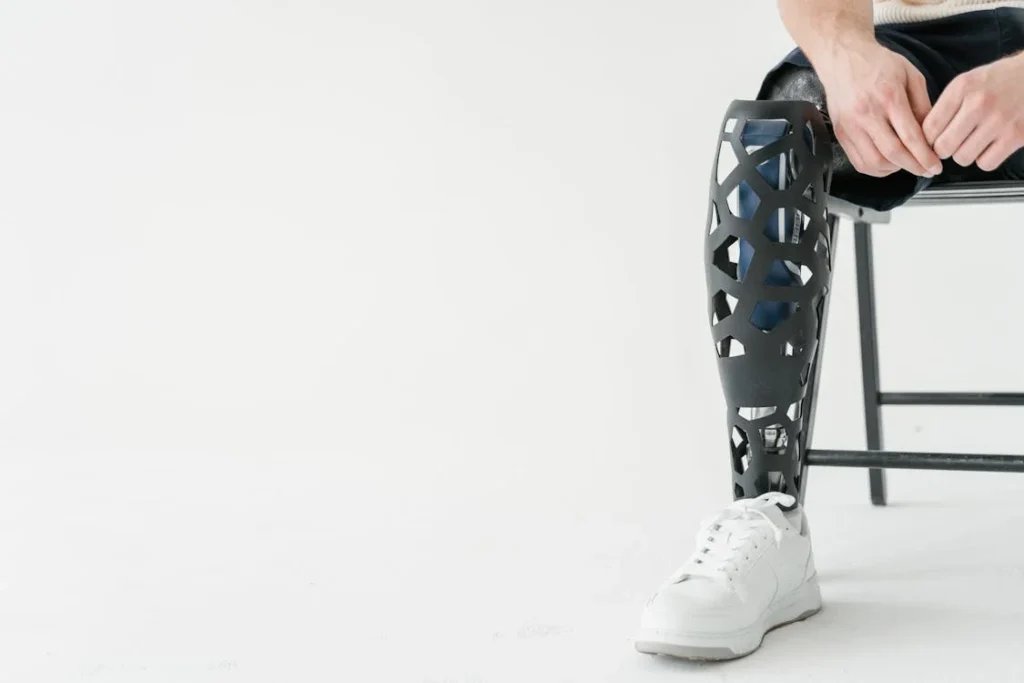
Össur: Pioneering Performance with Carbon-Fiber Technology
One of the most recognized names in sports prosthetics, Össur, has revolutionized the industry with cutting-edge technology that enhances speed, agility, and endurance.
Based in Iceland, the company is known for its Flex-Foot® technology, which uses carbon-fiber materials to create energy-returning prosthetic feet that mimic the natural push-off motion of human legs.
The Power of Energy-Returning Blades
Össur’s Cheetah® running blades are among the most popular choices for Paralympic sprinters and endurance runners. These blades store kinetic energy when the athlete steps down and release it upon push-off, creating an explosive forward motion.
This energy return helps athletes achieve sprinting speeds comparable to those of able-bodied runners.
The Cheetah Xtreme® is designed for high-impact sports like long jump and hurdles, providing additional stiffness for greater propulsion. Meanwhile, the Cheetah Explore® is built for recreational runners looking for a blend of comfort and performance.
Intelligent Prosthetics for Enhanced Control
Beyond running blades, Össur has made significant strides in microprocessor-controlled prosthetics. The Rheo Knee® XC, for example, adapts to an athlete’s movement in real-time, adjusting resistance to provide stability and smooth motion during rapid direction changes.
This makes it ideal for agility-based sports such as basketball, soccer, and tennis.
With a strong focus on research and innovation, Össur continues to push the limits of what’s possible in adaptive sports.
Their technology allows athletes to move with confidence, speed, and control, proving that prosthetic limbs are more than just replacements—they are performance enhancers.
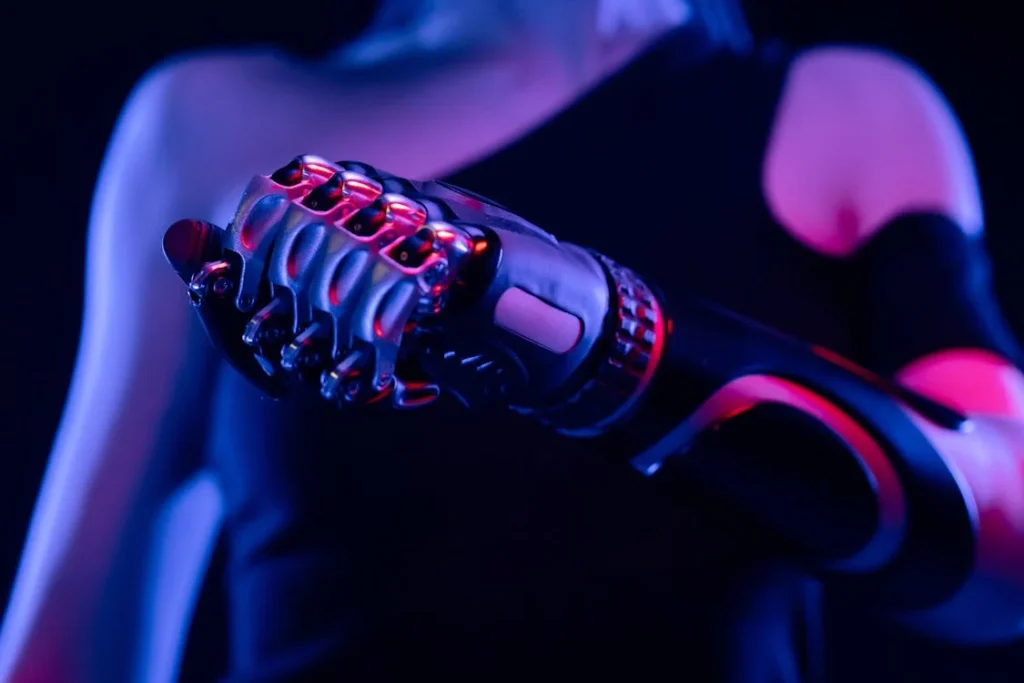
Ottobock: Advancing Sports Prosthetics with Smart Technology
Another global leader in prosthetic innovation, Ottobock, has been at the forefront of designing high-performance prosthetics for athletes across various sports.
Founded in Germany, Ottobock is known for combining biomechanics with smart technology, ensuring that prosthetic users experience smooth, natural motion.
The Innovation Behind the Genium and C-Leg
Ottobock’s Genium X3 is one of the most advanced microprocessor-controlled knees available today. Originally developed for military use, it offers unmatched durability and adaptability, making it a top choice for athletes in high-intensity sports.
The knee continuously analyzes motion and adjusts resistance in real time, allowing for quick transitions, controlled landings, and improved agility.
The C-Leg® is another game-changer, providing athletes with dynamic stability and effortless motion. It reduces stumbling risks, enabling smoother walking and running, making it ideal for sports that require precision movements and endurance.
Cutting-Edge Prosthetic Feet for Competitive Sports
Ottobock’s Challenger® foot is designed for multi-sport use, offering excellent energy return and ground contact stability. It is widely used by amputees participating in field sports, tennis, and even CrossFit.
The Runner Blade, another signature product, enhances sprinting performance by mimicking the natural response of tendons, delivering both speed and comfort.
Supporting Paralympians and Adaptive Sports
Ottobock has played a major role in supporting Paralympic athletes, providing technical services at international sporting events and continuously innovating to improve prosthetic function.
By integrating AI-driven motion sensors and lightweight materials, the company ensures that its products offer maximum efficiency, helping athletes push their limits.
With a strong focus on engineering precision and adaptive technology, Ottobock remains a key player in shaping the future of sports prosthetics. Their advancements enable amputee athletes to perform at elite levels while minimizing injury risks and maximizing comfort.
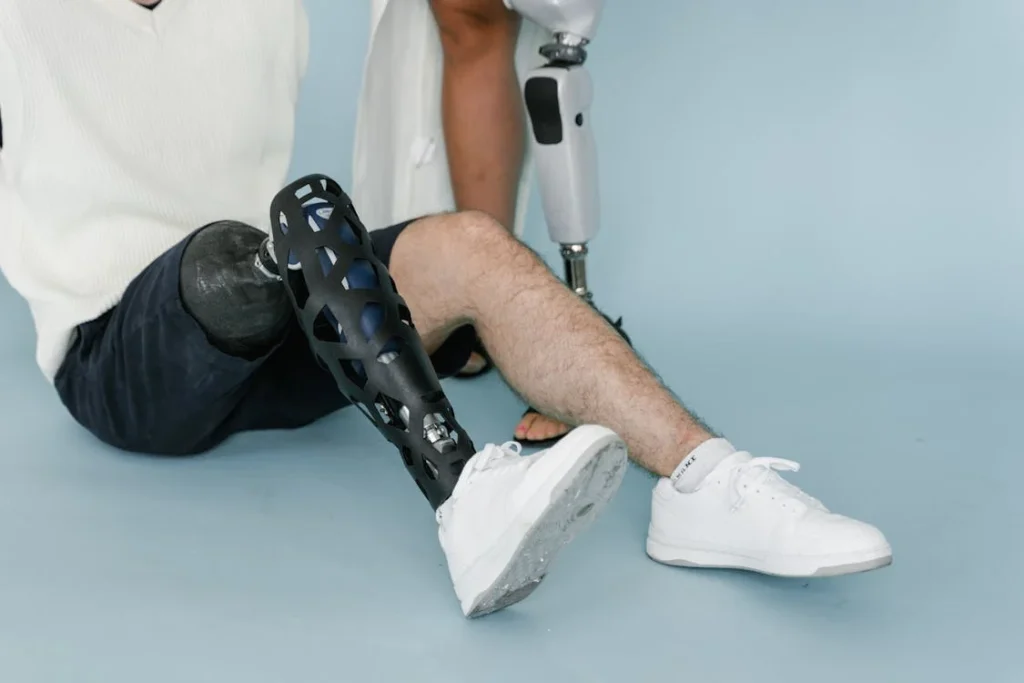
Blatchford: Engineering High-Performance Prosthetics for Agility and Endurance
Blatchford is a British prosthetics company known for its biomechanical approach to prosthetic design, ensuring that amputee athletes experience natural movement and stability.
With a strong emphasis on energy efficiency and adaptive technology, Blatchford creates prosthetic limbs that enhance performance while reducing strain on the body.
The Echelon Foot: A Game-Changer in Adaptive Motion
One of Blatchford’s standout innovations is the Echelon foot, designed to provide superior balance and energy return. Unlike traditional prosthetic feet, the Echelon adapts dynamically to different surfaces, allowing athletes to maintain stability on uneven terrain.
This makes it an excellent choice for trail runners, hikers, and athletes participating in outdoor endurance sports.
The foot’s hydraulic ankle system mimics the movement of a natural ankle, absorbing impact and reducing pressure on the residual limb. This helps prevent injuries caused by excessive strain, making it a popular choice among both competitive and recreational athletes.
The Elite Blade: Designed for Sprinting and High-Speed Movement
For track athletes, the Elite Blade is a top-tier option that delivers maximum energy return with each stride. Constructed from lightweight carbon fiber, this running blade allows for explosive acceleration while ensuring smooth transitions between steps.
It is specifically engineered for sprinting, jumping, and high-speed agility sports, making it a direct competitor to Össur’s Cheetah series.
Blatchford’s research-driven approach ensures that its prosthetic solutions do more than just enable movement—they enhance it.
By integrating shock absorption, joint protection, and adaptive response technology, the company continues to improve sports prosthetics, allowing amputee athletes to perform with greater efficiency and reduced risk of injury.
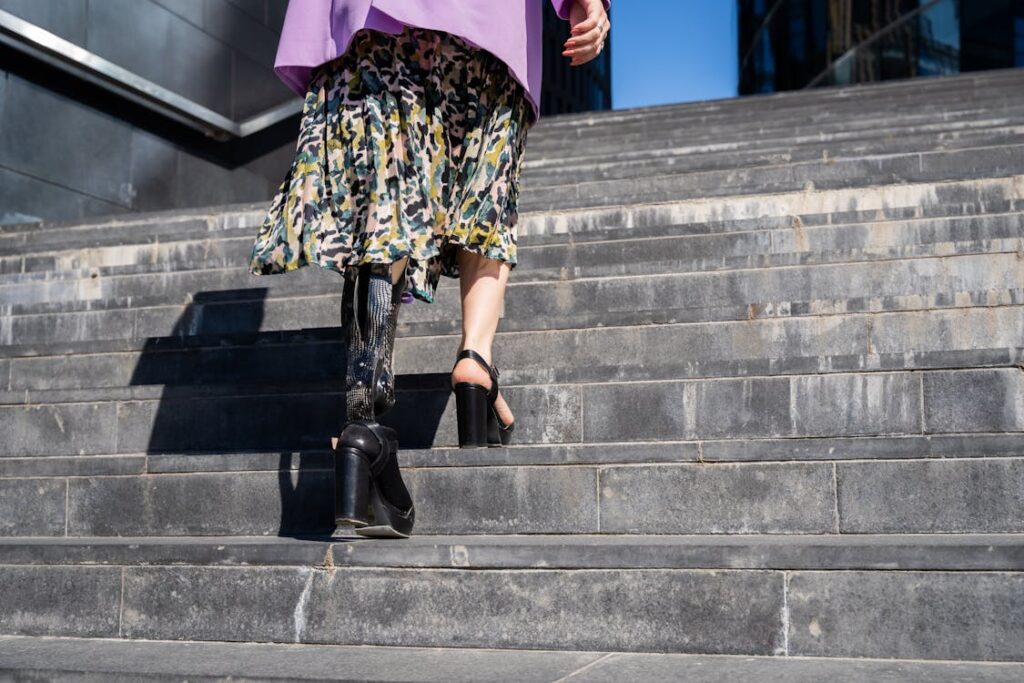
Fillauer: Combining Strength and Flexibility for Adaptive Athletes
Fillauer is an American company that has been pioneering prosthetic advancements for over a century. Known for its durable yet flexible designs, Fillauer creates prosthetic components that help athletes perform with greater efficiency and control.
The company’s commitment to innovation has made it a trusted name among adaptive athletes competing in various high-intensity sports.
The AllPro Foot: Versatile Performance for Multi-Sport Athletes
One of Fillauer’s flagship products, the AllPro foot, is designed for athletes who participate in multiple sports.
Unlike traditional prosthetic feet that are built for specific activities, the AllPro foot provides a balance of flexibility, shock absorption, and energy return, making it ideal for running, jumping, and agility-based sports.
Its split-toe design allows for enhanced stability during quick lateral movements, making it particularly useful for sports like tennis, football, and basketball.
The lightweight carbon-fiber construction ensures that athletes experience minimal fatigue, even during long-duration activities.
Running Blades That Maximize Speed and Efficiency
For track and field athletes, Fillauer offers Obsidian Running Blades, which deliver high energy return and efficient stride control.
These blades are engineered to provide a smooth transition between foot strikes, reducing unnecessary energy loss and improving overall sprinting performance.
Fillauer’s blades are also designed for durability, making them ideal for high-impact sports such as long jump, hurdles, and sprinting.
Athletes who require a combination of strength and flexibility in their prosthetic components often turn to Fillauer for long-lasting performance and precision engineering.
Supporting Athletes with Custom Prosthetic Solutions
Fillauer understands that every athlete has unique needs, which is why they offer custom prosthetic solutions tailored to individual movement patterns.
Whether an athlete requires increased shock absorption for jumping or enhanced rotational control for fast-paced sports, Fillauer works closely with prosthetists to deliver personalized solutions that optimize comfort and performance.
By continuously pushing the boundaries of prosthetic design and biomechanics, Fillauer empowers athletes to compete without limits, ensuring that prosthetic users have access to the best technology for their sport.
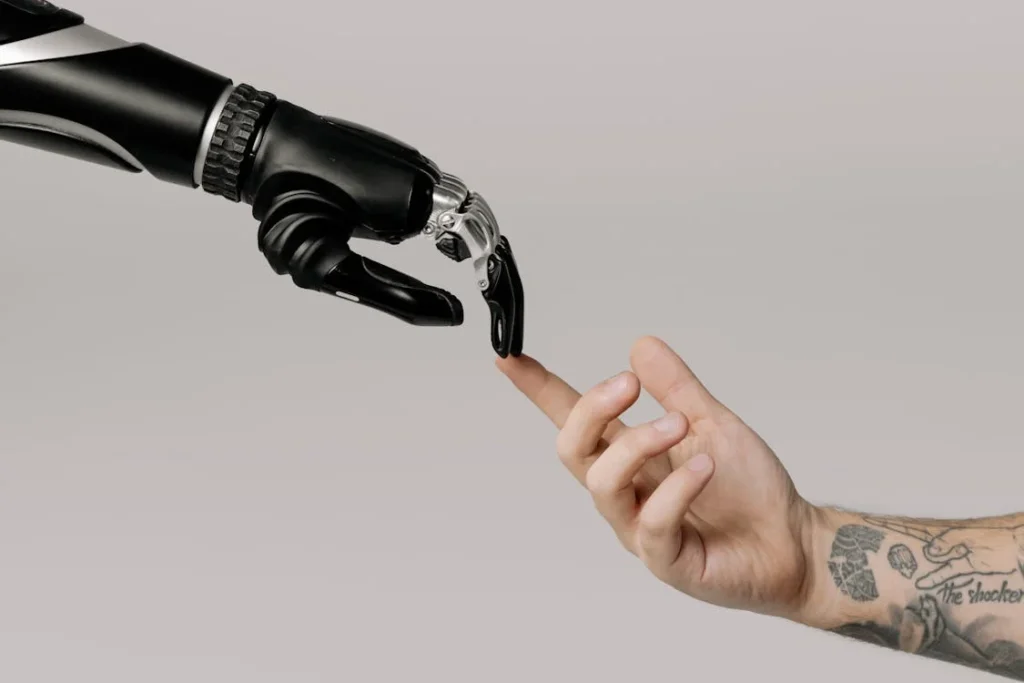
Van As Prosthetics: Revolutionizing Sports Prosthetics for Upper-Limb Athletes
While much of the focus in sports prosthetics is on lower-limb solutions, Van As Prosthetics, a Dutch company, has made remarkable strides in developing high-performance upper-limb prosthetics.
Their innovations have transformed the way upper-limb amputees participate in strength sports, combat sports, cycling, and even gymnastics.
Adaptive Sports Hands for Grip Strength and Control
One of Van As’s most revolutionary products is their Adaptive Sports Hand, designed to provide a secure grip, wrist rotation, and high-impact durability.
Unlike traditional prosthetic hands that prioritize everyday functionality, this sports-specific design is built to handle the extreme forces of weightlifting, rock climbing, and martial arts.
For athletes involved in powerlifting and bodybuilding, Van As offers specialized gripping attachments that allow users to hold heavy barbells and dumbbells without fear of slippage.
These designs ensure that upper-limb amputees can train at high intensities without sacrificing form or safety.
Specialized Prosthetics for Combat and Contact Sports
One of the most unique innovations by Van As is their combat prosthetic, developed for boxing, mixed martial arts, and other combat sports.
Traditional prosthetic hands are not built to withstand repeated impacts, but Van As has engineered reinforced, shock-absorbing designs that allow athletes to safely participate in striking and grappling-based sports.
The flexible wrist mechanism in these prosthetics helps fighters block, strike, and grapple with better control, allowing them to compete at higher levels.
This breakthrough has opened doors for amputees to enter martial arts competitions and train in combat disciplines that were once considered impossible for prosthetic users.
Advancing Upper-Limb Sports Prosthetics for Precision and Performance
Van As has also developed cycling prosthetics with integrated locking systems, enabling athletes to maintain a firm grip on handlebars while allowing for quick release in case of an accident.
These innovations are particularly beneficial for mountain biking, road cycling, and even motor racing, where grip control is essential for safety and performance.
By focusing on sport-specific needs and real-world athlete feedback, Van As Prosthetics has redefined what is possible for upper-limb amputee athletes.
Their commitment to engineering, customization, and durability ensures that prosthetic users can compete in sports that demand precision, grip strength, and high-impact performance.
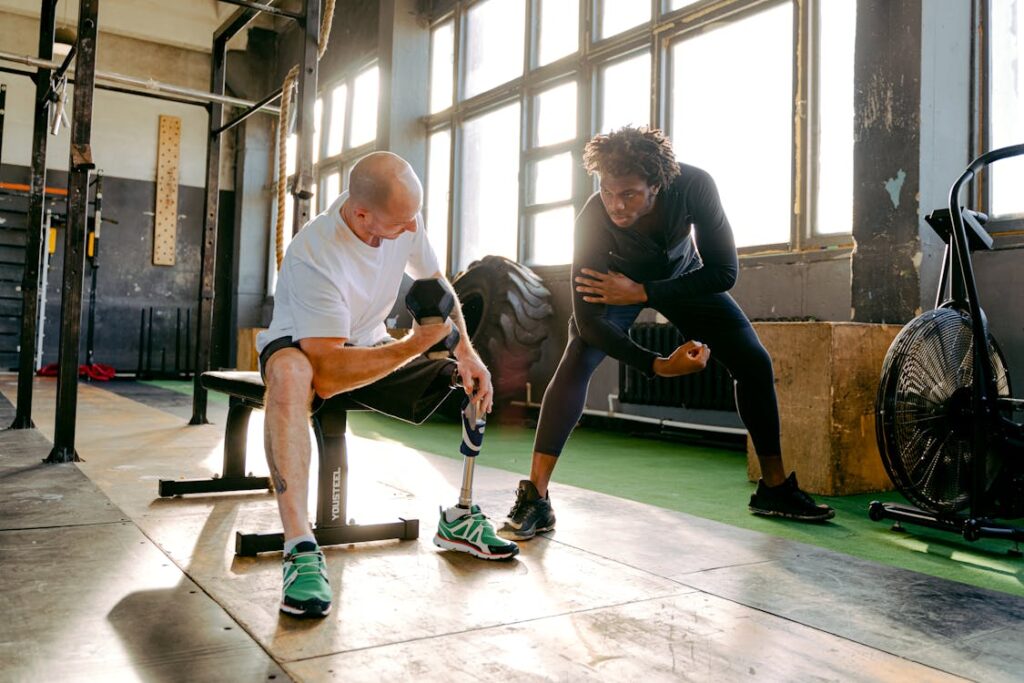
The Role of Research and Collaboration in Sports Prosthetic Innovation
Behind every high-performance prosthetic limb is a team of researchers, engineers, and athletes working together to push the boundaries of what is possible.
The most advanced sports prosthetics are not created in isolation—they are developed through continuous testing, athlete feedback, and cutting-edge biomechanical research.
Athlete-Driven Design: How User Feedback Shapes Innovation
One of the most important factors in prosthetic development is real-world athlete input. Many of the leading prosthetic brands collaborate directly with Paralympic athletes, adaptive sports professionals, and everyday prosthetic users to fine-tune their designs.
For instance, companies like Össur, Ottobock, and Blatchford regularly test their prototypes with elite athletes, analyzing movement patterns, energy efficiency, and comfort.
Athletes provide critical insights on what works, what feels natural, and what adjustments are needed to improve responsiveness and reduce strain.
This athlete-driven approach ensures that prosthetics evolve not just as medical devices, but as true performance-enhancing tools tailored to the unique demands of different sports.
University Research and Biomechanical Advancements
Many breakthroughs in sports prosthetics come from university research labs and biomechanics institutes.
Institutions such as MIT, Stanford, and Delft University of Technology have played major roles in developing energy-returning prosthetic feet, AI-driven knee joints, and high-efficiency suspension systems.
Some of the latest research focuses on neuromuscular control, where prosthetic limbs respond to nerve signals from the user’s body. This could revolutionize prosthetic sports performance, allowing athletes to control their limbs with greater precision and natural movement.
Additionally, robotic prosthetics with AI-powered adjustments are being explored, enabling adaptive athletes to perform complex motions with unprecedented accuracy and responsiveness.
These innovations could further narrow the gap between biological limbs and artificial ones, unlocking new possibilities in high-performance sports.
Collaboration Between Prosthetic Companies and Sports Organizations
Leading prosthetic manufacturers frequently partner with Paralympic committees, adaptive sports leagues, and rehabilitation centers to ensure that new technologies meet real-world athletic demands.
These collaborations help fund research, improve accessibility, and create customized solutions for elite and recreational athletes alike.
Organizations like the International Paralympic Committee (IPC) work closely with companies like Ottobock and Össur to provide top-tier prosthetic solutions for competitors at the highest levels.
Meanwhile, nonprofit groups and grassroots sports initiatives ensure that cutting-edge prosthetics are not limited to elite athletes but also reach those who want to stay active and enjoy sports recreationally.
The Future of Prosthetic Innovation in Sports
With the rapid pace of technological advancements, the future of sports prosthetics is set to break even more barriers.
Future designs may include fully AI-integrated limbs, self-adjusting hydraulic systems, and enhanced neural feedback mechanisms that make prosthetic movement nearly indistinguishable from natural biomechanics.
As research continues and collaborations between scientists, engineers, and athletes grow stronger, sports prosthetics will only become more powerful, efficient, and accessible.
The goal is not just to help amputee athletes compete—but to help them thrive, break records, and redefine what is possible in the world of sports.
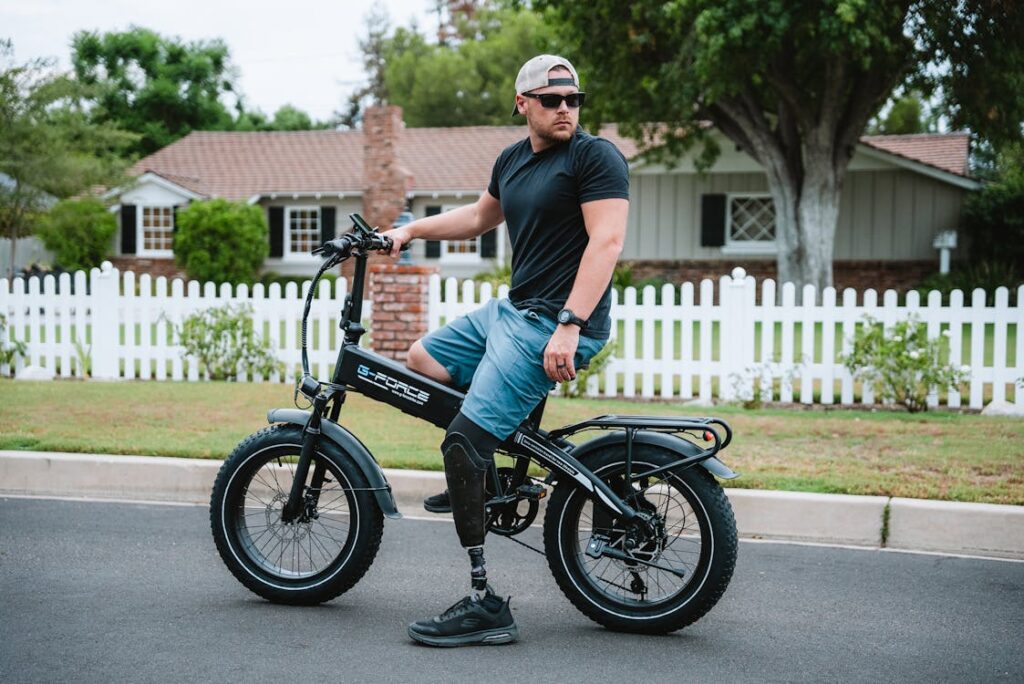
Accessibility and Affordability: Bridging the Gap in Sports Prosthetics
While cutting-edge prosthetic technology is transforming the world of adaptive sports, accessibility remains a major challenge.
Many high-performance prosthetic limbs are designed with elite athletes in mind, often carrying hefty price tags that make them out of reach for everyday users.
Ensuring that more athletes, regardless of financial background, have access to quality sports prosthetics is crucial for the growth of adaptive sports.
The High Cost of Performance Prosthetics
Advanced sports prosthetics, such as carbon-fiber running blades and microprocessor-controlled knees, can cost tens of thousands of dollars.
Unlike standard prosthetic limbs, which are often covered by insurance for basic mobility needs, sports-specific prosthetics are typically categorized as non-essential and receive little to no financial support.
For many aspiring athletes, the high cost of specialized prosthetics becomes a significant barrier to participation. Without proper funding or sponsorships, they are forced to train with less advanced equipment that may limit their performance and increase injury risks.
Initiatives Making Sports Prosthetics More Accessible
Several organizations and companies are working to make high-performance prosthetics more affordable and widely available.
Nonprofits such as The Challenged Athletes Foundation (CAF) and BlazeSports America provide funding for adaptive athletes to obtain sports-specific prosthetic limbs.
These programs ensure that young athletes and those from underprivileged backgrounds can access world-class prosthetic technology.
Manufacturers like Ottobock, Össur, and Blatchford have also introduced cost-effective versions of their high-performance prosthetics, making them more attainable for non-professional users.
By offering modular designs and adjustable components, these companies create solutions that can be adapted as an athlete progresses, reducing long-term costs.
The Role of 3D Printing in Affordable Prosthetic Solutions
One of the most promising developments in prosthetic accessibility is the rise of 3D printing technology. Traditional prosthetics require custom molding, expensive materials, and manual assembly, but 3D printing allows for faster, cheaper, and highly customizable alternatives.
Startups and research institutions are now creating 3D-printed running blades, adaptive sports hands, and even entire prosthetic limbs for a fraction of the cost of traditional models.
These prosthetics are not only affordable but also allow for easy modifications, making them ideal for young athletes who are still growing.
Expanding Access to Prosthetic Sports Programs
Increasing access to prosthetic sports programs is another crucial step in making adaptive athletics more inclusive.
Many sports leagues, rehabilitation centers, and grassroots organizations are partnering with prosthetic manufacturers to offer free or subsidized training sessions that include access to specialized prosthetics.
Countries that have invested in national adaptive sports programs, such as the United States, the UK, and Germany, have seen a rise in participation from everyday athletes, not just professionals.
Expanding similar initiatives globally, especially in developing countries, will ensure that more people can benefit from advanced sports prosthetics.
The Future of Affordable Sports Prosthetics
As technology advances, the cost of sports prosthetics is expected to decrease. More companies are exploring sustainable materials, open-source designs, and scalable manufacturing methods to reduce production expenses.
Additionally, government policies and insurance reforms could play a key role in making prosthetic sports equipment more financially accessible.
By focusing on affordability, accessibility, and global expansion, the future of sports prosthetics will not only be defined by high-tech innovations but also by how many lives they can impact.
Every athlete, regardless of background, deserves the opportunity to compete, train, and push their physical limits—without financial barriers standing in their way.
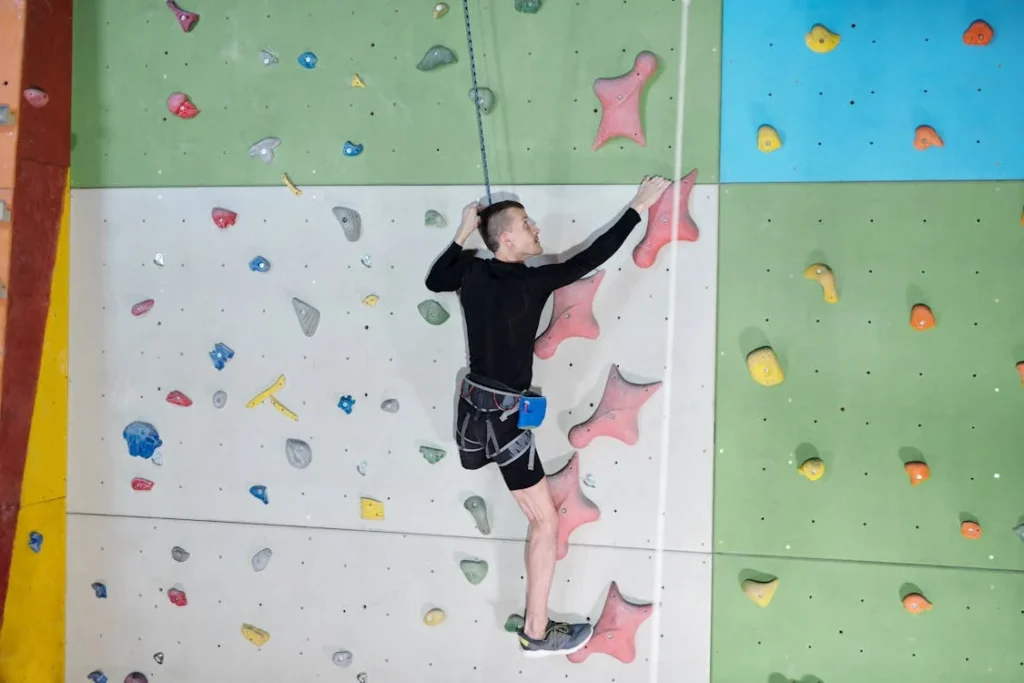
The Role of Adaptive Sports in Driving Prosthetic Innovation
The rapid advancements in sports prosthetics are not just fueled by research and engineering—they are also shaped by the demands and achievements of adaptive athletes.
Competitive sports provide the ultimate testing ground for new prosthetic technologies, pushing manufacturers to create faster, stronger, and more responsive designs.
As more amputee athletes enter the global stage, their performances influence the next generation of high-performance prosthetic limbs.
How Paralympic Competition Pushes Technological Boundaries
The Paralympics have played a massive role in accelerating prosthetic innovation. As athletes continue to break records and redefine human potential, prosthetic manufacturers are under constant pressure to improve their designs.
Every fraction of a second shaved off a sprint, every additional inch cleared in a jump, and every maneuver perfected in adaptive team sports pushes technology forward.
Runners competing with carbon-fiber blades have influenced the evolution of lighter, more flexible foot designs that maximize energy return.
Paralympic swimmers using customized prosthetic limbs for hydrodynamics have driven the development of waterproof and high-resistance materials.
Meanwhile, powerlifters and rowers have helped improve adaptive grip technology, ensuring that prosthetic hands provide firm, controlled grasp strength.
Extreme Sports and the Evolution of Durable Prosthetics
Beyond traditional competition, extreme sports athletes with prosthetics have pushed manufacturers to develop more shock-resistant and flexible designs.
Skateboarding, rock climbing, and freestyle motocross require prosthetic limbs that can withstand intense impact and dynamic movement.
Adaptive rock climbers, for example, have influenced the creation of specialized climbing prosthetics with rotating joints and rubberized grip surfaces, allowing for better hold on rock faces.
Snowboarders and skiers using prosthetic legs have pushed for knees with advanced suspension systems, helping absorb impact from jumps and rough terrain.
As extreme sports continue to grow within the adaptive athletics community, prosthetic companies are expanding their designs beyond traditional track and field models, ensuring that amputee athletes can perform safely in high-impact and unpredictable environments.
Team Sports and the Demand for Multi-Directional Prosthetics
Sports like wheelchair basketball, amputee soccer, and adaptive tennis require athletes to make quick lateral movements, sudden stops, and controlled pivots. These movements place different demands on prosthetic limbs compared to straight-line running or jumping.
Prosthetic manufacturers have responded by developing multi-axis knee joints and shock-absorbing footplates, allowing athletes to make more natural directional changes.
The need for durability in fast-paced contact sports has also led to reinforced suspension systems, ensuring that prosthetic limbs stay securely in place during sudden, high-speed motions.
The Influence of Adaptive Sports on Everyday Prosthetic Development
The innovations driven by elite sports prosthetics do not just benefit professional athletes—they trickle down into everyday prosthetic designs, improving mobility for thousands of amputees worldwide.
Technologies originally designed for sprinters, such as high-energy return footplates, have been adapted into everyday prosthetic legs, making walking more efficient.
Similarly, microprocessor-controlled knee joints, first developed for Paralympic competitors, are now widely available for active individuals who need better control and stability in daily movement.
The constant cycle of testing in adaptive sports ensures that the latest prosthetic advancements reach beyond stadiums and training facilities, improving life for anyone using a prosthetic limb.
As more amputee athletes enter competitive and recreational sports, the demand for more advanced, customizable, and accessible prosthetic solutions will continue to grow.
The fusion of sports and engineering ensures that the future of prosthetics is not only about restoring movement—it’s about expanding human potential in ways never imagined before.
Conclusion
The world of sports prosthetics is evolving at an incredible pace, driven by innovation, athlete feedback, and cutting-edge technology. Leading brands like Össur, Ottobock, Blatchford, Fillauer, and Van As Prosthetics are redefining what is possible for amputee athletes, creating high-performance prosthetic limbs that enhance speed, agility, and endurance.
From energy-returning running blades to AI-powered knee joints, today’s prosthetic technology allows athletes to compete at elite levels, break records, and push the boundaries of human movement. Advances in 3D printing, lightweight materials, and biomechanics research are making prosthetic sports equipment more efficient, customizable, and accessible than ever before.
However, the future of sports prosthetics is not just about performance—it’s about accessibility. Expanding funding, insurance coverage, and cost-effective manufacturing will ensure that more athletes, regardless of background, have access to state-of-the-art prosthetics.
At Robobionics, we believe that prosthetic technology should empower every athlete to move without limits. Whether you’re a competitive sprinter, a recreational sports enthusiast, or someone looking to regain mobility, the right prosthetic solution can help you achieve your goals. Contact us today to explore how innovation can elevate your movement and performance!



